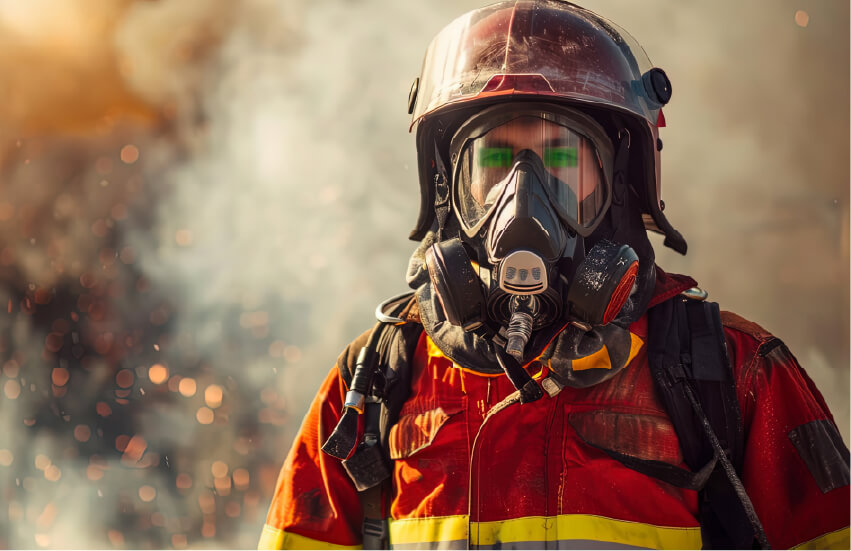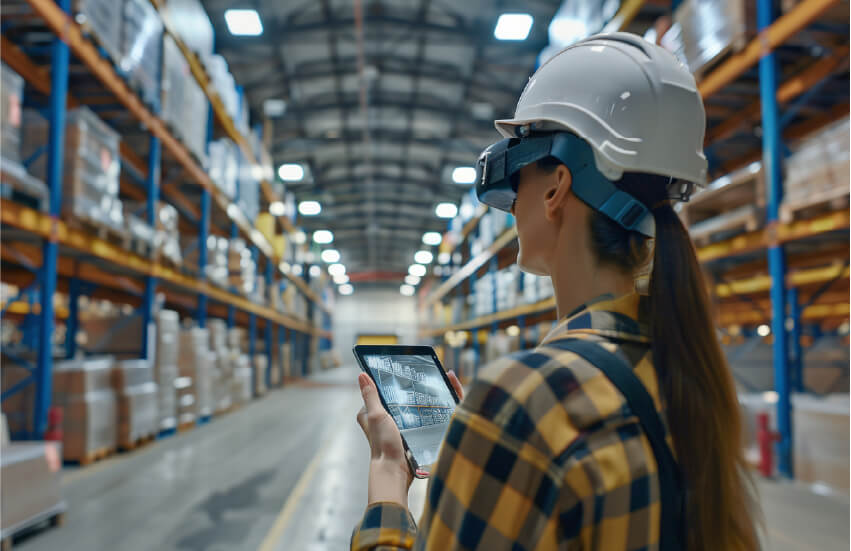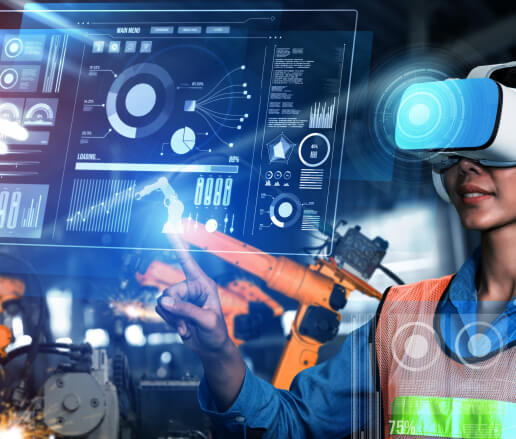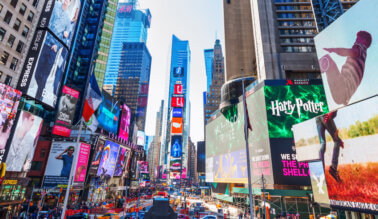Why Industrial AR Adoption Is Rising, and What Cellular Connectivity Has to Do with It
by Webbing Team | October 28, 2025
For day-to-day industrial work, augmented reality (AR), which adds digital overlays to what a worker sees, is typically the most relevant extended reality (XR) tool. XR is the umbrella category that also includes virtual reality (VR), that places the user inside a fully simulated environment (which is great for training and simulation, but not for hands-on work), and mixed reality (MR), which combines 3D content with the real world so digital parts can be placed, moved, or measured against physical objects.
The adoption of augmented reality keeps rising. IDC announced that worldwide shipments of AR and VR headsets combined with displayless smart glasses are expected to grow 39.2% in 2025, reaching 14.3 million units. While consumer devices will dominate unit volumes, industrial AR uptake is rising too. According to Deloitte’s 2023 survey of senior executives in the US manufacturing industry, 14% had already implemented AR/VR/XR technologies and 25% experimented with them. In a 2024 survey, 64% said they were using these tools or planned to invest in them in the near future. KPMG’s Global Tech Report 2024 also shows this momentum, with 85% of executives reporting a positive impact on profitability from AR/VR/XR, 25% more than a year before.
Along with the overall growth in adoption, cellular connectivity is becoming a bigger part of it. In its “State of private 5G in 2024” report, IoT Analytics listed AR-based inspections among the top five private-5G use cases worldwide. Analysts’ forecasts echo the trend: ABI Research’s latest outlook projects that by 2027, around 30% of total augmented reality shipments, and 23% of VR shipments will include cellular connectivity. Their earlier expectations were way more conservative – in 2018, they said less than 10% of industrial smart glasses and standalone VR devices would have a 5G connection by 2026.
Cellular connectivity is essential for AR, because many use cases happen away from reliable Wi-Fi: on factory floors, in refineries, ports, stadiums, or out in the field. Cellular networks provide consistent coverage for moving devices and uplink capacity for live camera feeds. Some devices use private cellular connectivity, some rely on public networks, especially the ones that are used by emergency response crews or field service teams that must work beyond the reach of fixed lines. Device designs may also vary: some industrial AR wearables have a built-in 4G and 5G modem, most consumer headsets ride on a phone or 5G router, and for certain popular enterprise headsets, cellular is added via an external cellular modem accessory.
Let’s look at some of the use cases:

First Responders
First responders use cellular-enabled AR smart glasses and phones that overlay critical information in their field of view and stream what they see to remote experts. On scene, a firefighter can scan equipment and get step-by-step checks, a medic can pull up triage protocols or drug dosages hands-free, and a police officer can view building layouts as they move. This is important because emergencies don’t happen in areas with good Wi-Fi reception. Public cellular networks provide wide-area coverage and mobility in city blocks, and strong uplink for continuous video. It allows for faster, safer decision-making, and what is also important, offers a deployment model that scales from a single unit to city-wide operations without installing new infrastructure.
For example, at the Singapore Civil Defence Force, firefighters use 5G-connected smart AR headsets that can instantly identify firefighting equipment and detect missing items and defects. First responders also carry a tablet that has an AR video-conferencing app to live-stream high-resolution footage to experts, who are not present at the site, for more comprehensive investigations. At the fire station, the headset supports SCDF personnel with a virtual checklist and step-by-step guide during inventory checks, which firefighters conduct up to several times a day.

Manufacturing Sites
On the factory floor, cellular-enabled AR is mainly used for work instructions and real-time quality inspections running on smart glasses or 5G smartphones. Inspectors see checklists and key metrics anchored to parts; maintenance teams stream live video (and sometimes thermal) to specialists who can draw annotations that appear in the worker’s view.
Factories are large spaces with moving workers, vehicles, and machines, which at times can be tough for radio signal – Wi-Fi handoffs and jitter are common pain points. Typically, at manufacturing sites, a private 5G network ensures campus-wide mobility and predictable latency, so AR remains stable from one end of the line to the other. Operationally, it allows to standardize and create one connectivity fabric for connected workers, machines, and devices, with policy controls and eSIM-based provisioning to manage fleets at scale.
At Schneider Electric site in Vaudreuil, maintenance technicians use 5G smartphones connected to the Schneider AR application to complete maintenance using real-time data linked to virtual objects such as a machine, a production line or the entire factory. They can simply film a machine to access information on its status and the subsequent maintenance operations – while reporting real-time information to the cloud. As an added bonus, they can reduce machine downtime, speed up maintenance operations and limit the number of human errors.
Oil and Gas
In the oil and gas industry, workers need to connect their AR devices at huge and oftentimes harsh sites such as refineries, offshore platforms, or pipelines. With cellular-enabled smart glasses or 5G phones, technicians see step-by-step instructions and live readings or stream video, thermal images, and photos to a remote expert. Private or public 5G networks provide wide and predictable coverage with good uplink, so overlays don’t glitch when workers move between units and the same gear can switch between private 5G and public networks if need be. This matters because it makes field work faster and safer.
For instance, MRTEch published a live case study of explosion-proof 5G-connected XR glasses with integrated thermal imaging deployment in a leading refinery. The refinery faced multiple operational challenges related to inspections: extended downtime due to manual reporting, delayed expert input, difficulty in accessing technical documentation and repair instructions in the field, as well as health and safety risks for frontline workers in hazardous zones. Within the first month, the refinery reported 25% reduction in inspection cycle time, 30% faster issue resolution in maintenance tasks and significant improvement in worker safety due to reduced time in hazardous areas.

Warehouse Operations
With cellular-enabled AR smart glasses or 5G phones, pickers see pick-by-vision arrows, and quantity checks right in their view; packers get instant guidance; receivers see put-away routes and damage prompts. When something’s off, workers stream video/photos to a supervisor who can draw annotations that appear on the bin or pallet.
In Singapore, Zuellig Pharma, a healthcare solutions provider, implemented an AR-based stock picking system to assist with warehouse operations. A portable 5G platform was used, enabling the company to experience 5G’s capabilities on-premises, along with custom augmented reality goggles to select items for shipping (AR Vision Picking). It improves productivity, increasing throughput for workers, while real-time analytics and insights offer a bird’s-eye view of the entire process. AR Vision Picking delivered 30% improvement in pick productivity and 100% pick accuracy, plus overall increase in safety.

Connectivity Requirements
Depending on multiple conditions, industrial AR use cases may need a customized connectivity setup. But regardless of the use case, seamless augmented reality performance requires a network infrastructure that prioritizes low latency, high bandwidth, and reliable connectivity.
Latency
AR applications depend on real-time data processing to overlay digital content onto the physical world, which demands minimal delay between user actions and system responses. For example, in an industrial maintenance tool, even a 50-millisecond lag can cause misalignment between virtual objects and real-world surfaces. Networks must support latency below 20 milliseconds for mobile AR. Furthermore, latency in AR/MR is crucial to promoting user immersion and reducing MR sickness. Technically, 5G networks can provide latency as low as 1ms, but it’s important to remember that actual latency depends on your connectivity provider’s core network, since the data needs to travel all the way to the provider’s data center before going to its destination.
Bandwidth
Bandwidth is equally critical, especially for applications streaming high-resolution 3D models, spatial maps, or live video feeds. As encoding and decoding data are time-consuming processes, the transmitted data cannot be compressed, making high bandwidth essential for the optimal functioning of AR applications. A basic mobile AR app might need 10-50 Mbps, while enterprise-grade AR tools (e.g., remote collaboration with 3D holograms) can require 100 Mbps or more.
Reliability
Reliability and consistency are critical. AR applications often rely on continuous synchronization between devices and cloud services. Packet loss above 1-2% or variation in latency can disrupt visual tracking or cause virtual objects to flicker. For mission-critical AR, a connection should be redundant to ensure failover if one network drops. Testing under realistic conditions such as weak cellular signals is essential to identify and mitigate bottlenecks.

Webbing’s Solution
Webbing’s connectivity solution provides access to reliable and high-quality internet with low latency and exceptional coverage for AR devices wherever they are deployed and regardless of connectivity setup. Our network of 600+ mobile operators guarantees worldwide coverage and allows to roam on several carriers’ networks in every region, solving the problem of weak spots that any mobile network may have and ensuring full coverage and continuous connectivity even at remote locations.
Our eSIM solution allows for remote provisioning and a swap between multiple mobile carrier profiles without carrier integration, easily turning it into any operator’s SIM. This may be especially useful for organizations that need to use a third-party carrier such as FirstNet for their projects. It also ensures failover connectivity with the option to fall back from a failing profile to a different profile without any need to communicate with a remote server.
Webbing is a full MVNO that owns its core network, which is a fully redundant, distributed network with data centers on every continent. It features local breakouts and a variety of network solutions to support high-performance connectivity. In 2024, Webbing further enhanced its global network by adding new data centers in Japan, Singapore, and Australia. This infrastructure allows to guarantee high data throughput and low latency to all connected devices and makes Webbing’s network well suited to support mission-critical, high-data consumption type of use cases.
A flexible approach to data packages allows us to tailor our connectivity offering for every customer based on the type of connected devices and their data consumption needs as well as the locations where the devices are used, aiming at overall optimization of the total cost of operations for the client.
Webbing’s solution helps organizations overcome their connectivity problems and reduce time to market for global deployments, providing the benefits of roaming with multiple carrier options in every country, and seamless transition between carriers, while maintaining low rates and low latency on a global scale with a single SIM.
Reach out to learn more about how Webbing’s solutions can support your AR deployments.




